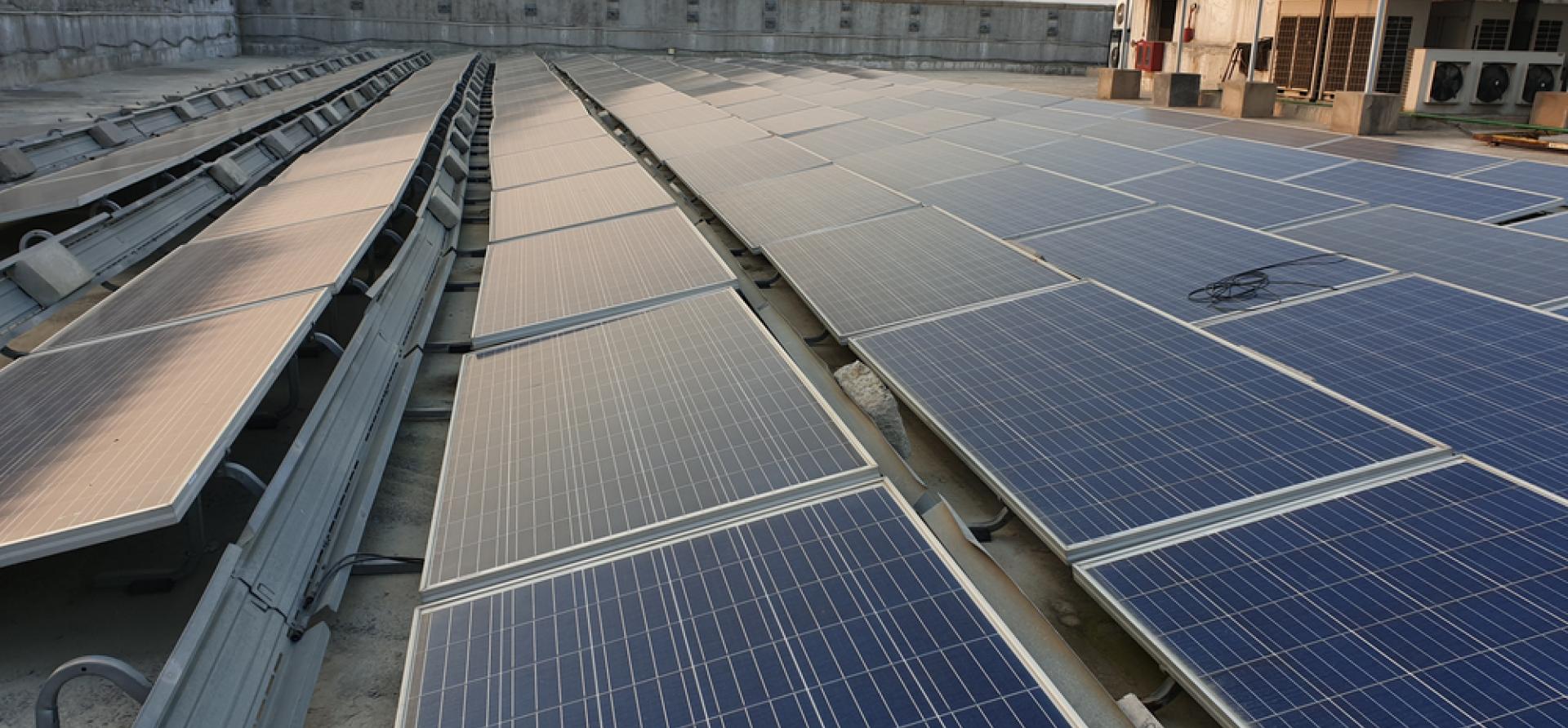Delhi's electricity transition is progressing but needs to accelerate to hit renewables target

Key Findings
Delhi must use the Rs33.48 billion (US$407 million) allotted to the energy sector in its budget for 2023-24 to aggressively pursue solar power targets, promote sustainable practices in various sectors and participate more in green electricity markets.
With the current rooftop installed capacity of approximately 208 megawatts (MW), Delhi needs approximately an annual capacity increase of 24% in the next three years to meet the 750MW target.
Delhi is also the only state to shut down all its thermal power plants and shift its industry to clean fuels.
According to an IEEFA report, Delhi has just 9% of renewables in the power mix, with a huge percentage of renewable energy potential still being untapped (86%). The state has just met 12% of its December 2022 renewable energy targets with limited participation in green market mechanisms.
With the mercury rising in India's capital, New Delhi, electricity demand is touching new heights. The state government expects peak demand to touch 8,000 megawatts (MW) by June or July 2023, beating last year's record high of 7,695MW by about 4%. The burning of fossil fuels, which fire power plants that supply nearly two-thirds of this need, adds to Delhi’s deteriorating air quality leaving it trapped in a vicious cycle of rising temperature and electricity demand.
Although the Delhi government has taken initiatives to serve this demand through renewable energy and rationalise demand by promoting energy efficiency, there is room for improvement if the state wants to lead the country in terms of electricity transition.
The state must aggressively pursue solar power targets, promote sustainable practices in various sectors and participate more in green electricity markets. For this, the well-planned use of the Rs33.48 billion (US$407 million) allotted to the energy sector in Delhi's budget for 2023-24 is crucial.
Need to ramp up renewables
Delhi's peak power demand has increased rapidly as its electricity consumers grew 83% between 2011 and 2021. As a result, the state's peak demand in the financial year (FY) 2021-22 was 52.4% higher (7,323MW) than FY2010-11 (4,810MW).
Renewable energy had a key role in Delhi's ability to serve the peak demand. But far from resting on its laurels, the state needs to accelerate renewable energy deployment and buy more clean energy by participating in green market mechanisms.
Currently, Delhi's state electricity distribution companies (DISCOMs) have power purchase agreements for 8,115MW. Of this, only 32,67% (2,560MW) comes from renewable energy.
Similarly, Delhi also utilized just 13.86% of its renewable energy potential as of March 2023. With an installed capacity of 302MW, it met just 11% of its renewable energy target by December 2022.
Moving in the right direction
The state has taken steps to add to its renewable energy generation capacity. By 31 March 2023, its renewable energy capacity rose to 302MW.
Delhi is also the only state to shut down all its thermal power plants and shift its industry to clean fuels. The state's draft solar policy, unveiled in 2022, set an ambitious target of installing 6,000MW of solar capacity by 2025, which will comprise 750MW of rooftop solar and 5,250MW of utility-scale projects outside Delhi.
The time is now to make efforts to achieve the ambitious targets. With the current rooftop installed capacity of approximately 208MW, Delhi needs approximately an annual capacity increase of 24% in the next three years to meet the 750MW target. This will need the implementation of models such as hybrid renewable energy service company (RESCO), community solar and peer-to-peer trading. This will help aggregate the demand and resources from small rooftop owners.
Delhi will also need financial incentives like partial guarantee funds, credit guarantee funds and green bonds to raise funds for achieving these targets.
Until Delhi ramps up its renewable energy generation capacity, the state should look at alternatives to procure clean power.
The Institute for Energy Economics and Financial Analysis highlighted in the recent State Electricity Transition (SET) report that the contribution of green electricity markets, like the green day ahead market (GDAM), in Delhi's renewable energy mix is relatively small. The report found that the state only purchased and sold 303 million units (MU) and 3.46MU, respectively, in the GDAM through power exchanges.
Delhi should look to procure more renewable energy through GDAM, as the platform will play a significant role in the future.
Effective demand-side measures
Apart from the supply-side measures to ramp up renewable energy capacity and phase-out fossil fuels, the Delhi government is also making efforts on the demand side to promote energy efficiency.
The state government has promoted using energy-efficient building codes to tackle construction dust and better appliances that consume less electricity. It has also done well by installing 378,992 LED streetlights across Delhi as of 28 April 2023.
LED streetlights are another tool for state governments to save electricity. At a national level, LED streetlights have helped save 8,857MUs per year and avoided 1,476 MW of peak demand. In addition, 13,419,641 LED bulbs distributed in Delhi under the UJALA scheme resulted in state-level energy and cost savings of 1,742,769 MWh and Rs6.97 billion (US$ 0.85bn) per year, respectively.
Further, the state has successfully installed 259,071 smart meters out of the sanctioned 259,713 under the National Smart Mission. Such demand-side measures help monitor, track and optimise the electricity bills ensuring effective utilization of each generated electron.
The SET report identified several impediments to Delhi's transition, including a low percentage of renewables in the power mix (9%), untapped renewable potential (86%), unmet renewables target for December 2022 (88%), and limited participation in green market mechanisms. Despite having the right resources and the distribution and transmission infrastructure, progress has been slow. The state must accelerate the adoption of rooftop solutions and hybrid projects (renewable + battery storage) to guarantee round-the-clock power (RTC) and overcome the aforementioned barriers.
While Delhi has taken some steps towards a clean electricity transition, there is no doubt that the state lags in several areas. Setting ambitious targets for renewable energy capacity addition is the right move, but the government must also take steps to achieve those targets. At the same time, it must also not lose momentum in promoting energy efficiency. Electricity demand will keep rising in the years to come, and the only sustainable option for Delhi is to use more renewables to serve its consumers.
This article was first published in The Economic Times.















